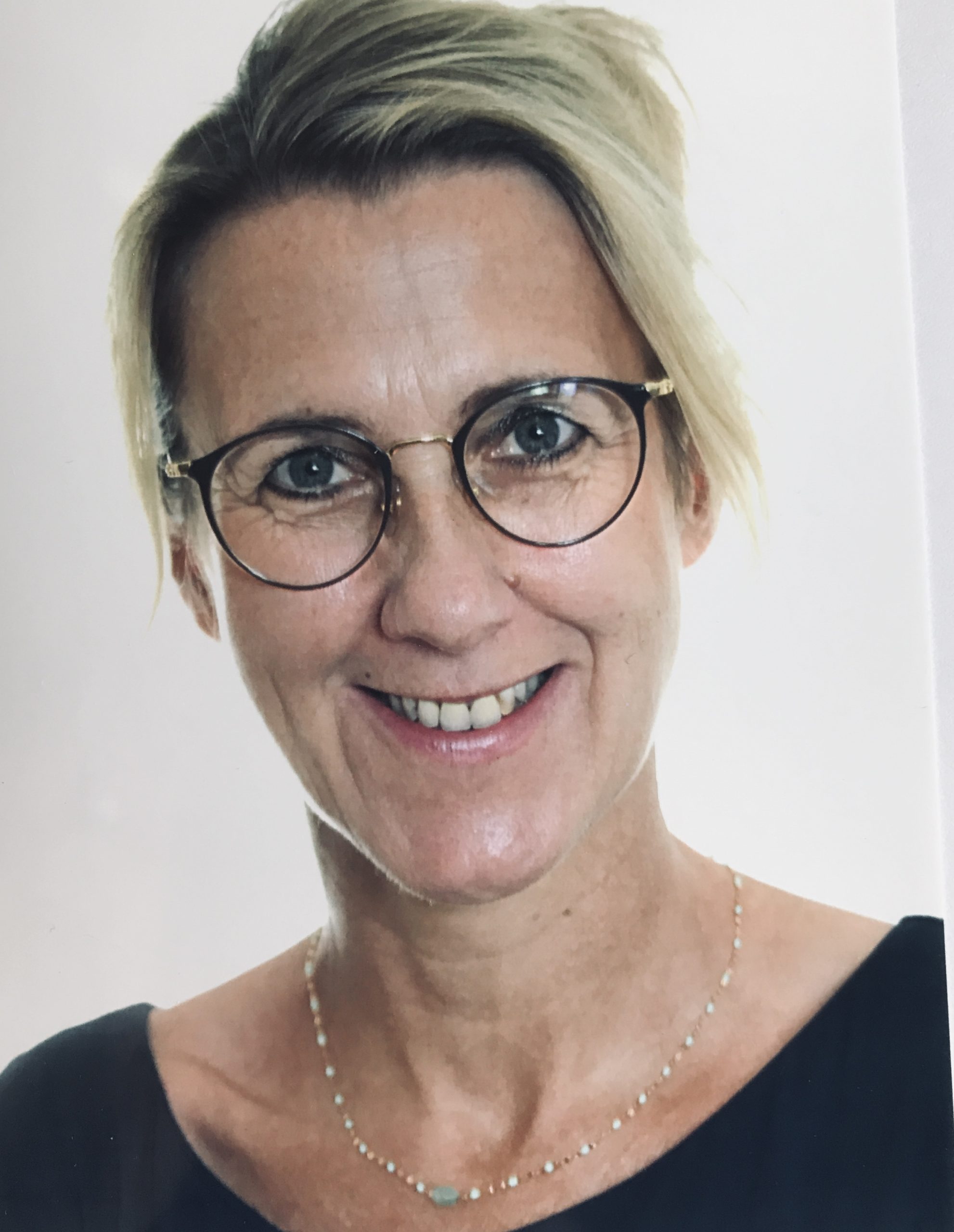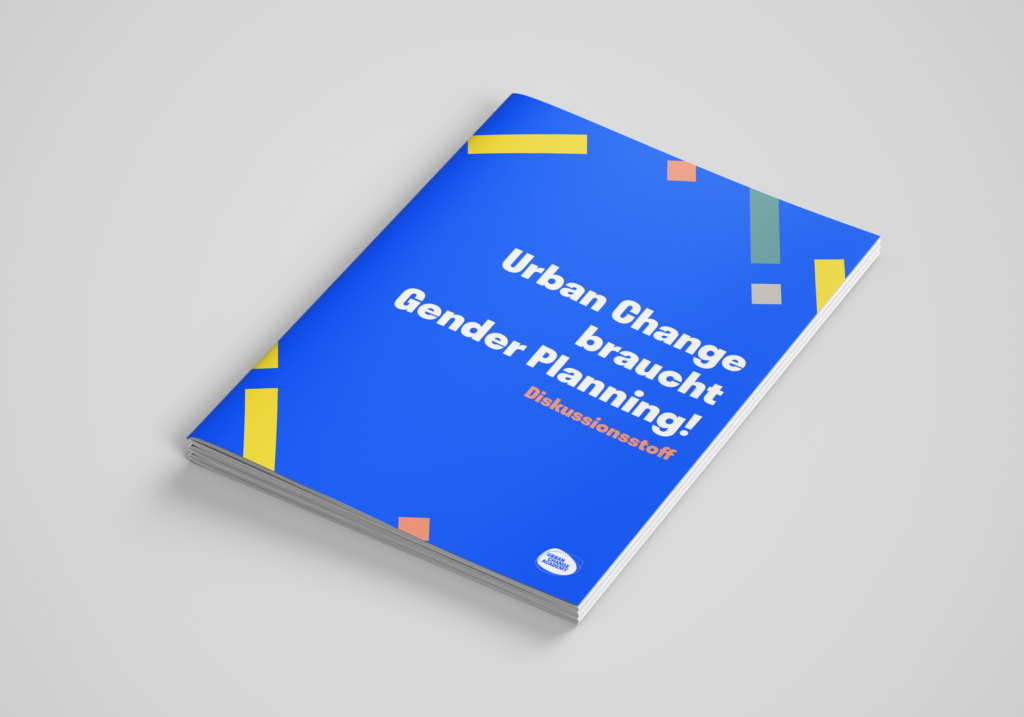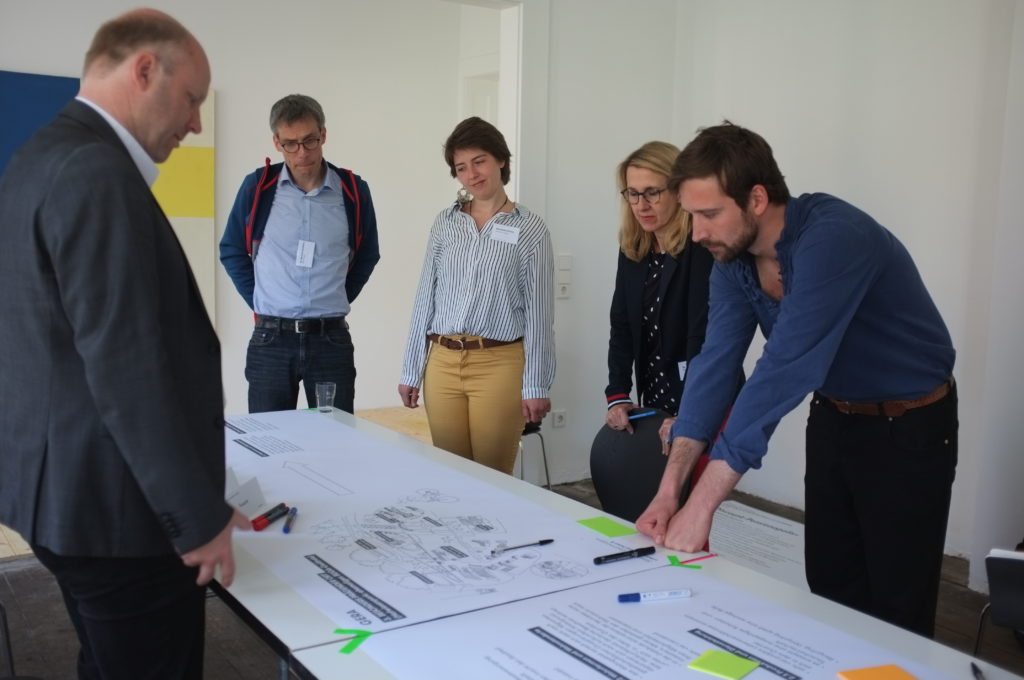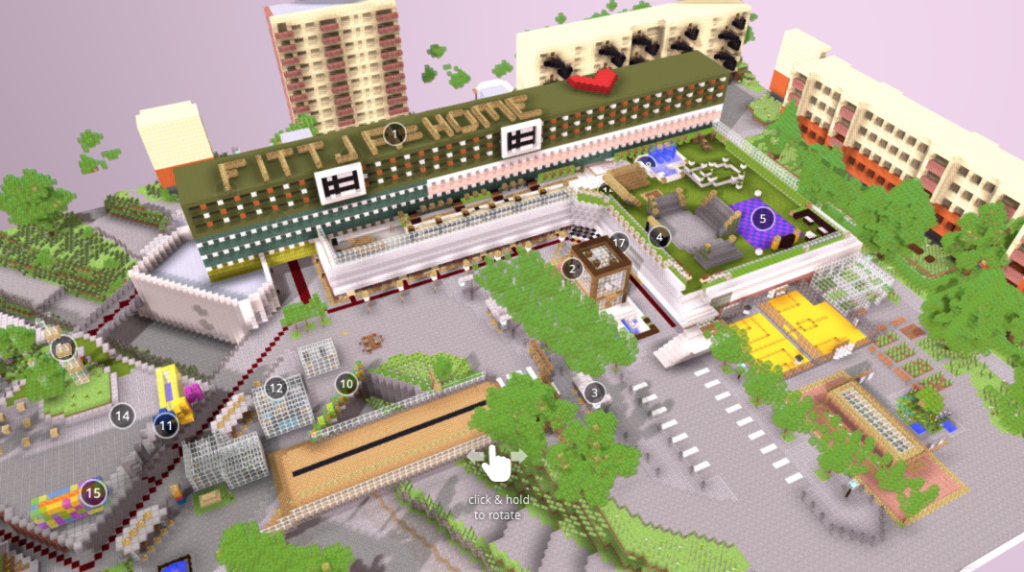The interview with Marion Klemme took place on 22.09.2020 — In parts of Europe, including Great Britain, the Covid infection figures were rising sharply again. In Bavaria and North Rhine-Westphalia, protective measures were being tightened.
The coronavirus pandemic has caught us all on the hop. Looking back over the past few months, what impact has it had on your work?
Marion Klemme: Covid has had a massive impact on our projects. We didn’t realise that at the beginning because we were sitting at home and just trying to run everything from there. You have to know that we do a lot of research projects and also public events. It became clear relatively quickly that every one of our projects would be affected by Covid.
The lockdown has shown us all what a city looks like when there is hardly any life there anymore.
Workshops, congresses, events, exhibitions: We either had to reschedule, postpone or think under completely new conditions. This means that the core of our work was, and continues to be, affected.
Let’s talk about the city centre.
At BBSR, we have an intensive discourse on what happens to cities during the pandemic. We distinguish between observations about what is currently happening and the overarching thoughts on the post-Covid city. In other words, what might cities look like in the future?
The lockdown has shown us all what a city looks like when there is hardly any life there anymore. There is also the issue of working environments, since so many people are now working from home. Covid has a massive impact in both areas.
The beginning of the discourse was strongly normative and influenced by our wishes for what a city of the future should look like. One’s own ideas of the future were, so to speak, linked to the Covid discussion. These ideas often didn’t match with the reality, because ultimately, we have to start with the existing situation. I think it’s important to do a lot of analysis – i.e. urban observation – right now, in order to understand what’s happening.
An important point. That’s why we will start with the question about your observations. When you look at the topic of the city centre, what specifically has changed as a result of Covid?
The city centres are no longer frequented to the same extent as they were before Covid. The desire to buy, the purchasing power is no longer there to the same extent as it was before Covid. The inner cities – if we mean inner cities in the sense of retail areas, pedestrian zones, city centre areas – are strongly characterised by the fact that trade is no longer as prosperous as it was before the pandemic. But the changes go far beyond trade. There is much less business travel, and this is affecting the big cities. The hotel and catering industry, especially in the vicinity of office locations, trade fairs and the like, is particularly hard hit. What will happen here in the future? Which areas will pick up again and which will not?
In a recent stakeholder process, we floated the idea that retail will no longer be the lead function in the city centre of the future. At first, that didn’t elicit much of a reaction. I think this thesis would have been much more controversial a few years ago, wouldn’t it?
Yes, I think so too – although you also have to distinguish between different types of cities and locations when it comes to the lead function. I don’t think we need to talk about Hohe Straße in Cologne or Mönckebergstraße in Hamburg. It is probably the medium-sized cities or even the inconspicuous large cities that are most affected – like Herne, for example. They suffer quite differently under the pandemic from the metropolises, which will perhaps still have a stronger attraction in the retail sector – even when travelling becomes a possibility again. I believe that a certain amount of trade will remain – whether it will continue to be a leading function or not is something I will leave open for the time being. Even if it is a difficult time for individual traders and we have to deal with many closures, from a planning point of view it is a gain for the city centre if a diversity of uses and functions returns in terms of living, working, commerce, urban production, but also public facilities such as libraries, music schools and youth centres.
Have you observed, through the development of the Covid crisis that the gap between the cities – not least in the inner city – is becoming more apparent?
I think in the short to medium term, yes. But in the long term, the development really depends on how the local players reinvent themselves: What alliances can they form, what new co-production or cooperation can they enter into? Perhaps municipalities that have been struggling with structural change for a long time are also being more creative and are more courageous in doing new things than the municipalities that have relied on the prosperous inner city for a very long time. Small towns like Elmshorn, for example, which experimented with a pop-up format even before Covid, have been able to have quite a different experience from the large cities that have always relied on the big players. Also with a view to the stakeholder landscape, perhaps people are coming together more quickly in a smaller spatial context to get something off the ground together.
It’s interesting that you mention the word courage. We’ve had that in all the interviews so far: We have to be courageous. It’s about experimenting, trying things out and approaching things with courage. This word seems to be somehow central.
We really need more courage (laughs)! If you lack courage, you don’t try new things. But new things are essential for the development of inner cities. We also see that many places are already experimenting with new formats. For example, small bookshops are offering delivery services. A lot of things are being tried out.
If people are no longer attracted to the city centre through shopping, then you have to create meeting places where people can gather and which can also be used for cultural and artistic activities.
Are there any other observations on the topic of the city centre that you can share with us?
Public space is extremely important for city centres. I think that the public spaces in German city centres – in some, certainly not all – have been neglected in recent years. This is particularly noticeable if you take a look at our neighbouring countries such as Switzerland, Austria or the Netherlands. There, public spaces have a very different appearance from in this country. In Germany, the main squares are usually spruced up – but if you go three streets further, things start to crumble rapidly. In my view, there is a great responsibility to put public space back in the foreground, especially if you want to locate non-consumer-oriented functions in the city. Public space needs investment and can be redesigned together with private individuals. New cooperations or co-productions need to be found in order to use these spaces differently.
What role does mobility play in this?
The mobility revolution is an important factor because cities are often already very densely built. As a rule, space is scarce. If you are thinking of taking away some areas from private motorised traffic, then you should take the opportunity to upgrade these areas in terms of amenity value, cultural events, people coming together and opportunities to meet. If people are no longer attracted to the city centre through shopping, then you have to create meeting spaces where people can gather and which can also be used for cultural and artistic purposes. Many areas have to work together in the sense of integrated urban development.
In the long term, will politics go so far as to make invest- ment in public spaces part of an economic stimulus package in the larger sense? Or with a view to the restaurant and hotel trade alone.
There are also efforts on the part of the federal government to further strengthen the city centres. In many municipalities it is now important to initiate processes in the short term to take advantage of these windows of opportunity that are just opening up. I think we have to be careful with all measures that we do not promote and finance structures or operating models that would not have been viable in the near future even without Covid, because they are too narrowly calculated from an economic point of view or because the online world interferes with it. We need solidly elaborated ideas that show us that a change of course is being sought for the inner cities. And at the same time, the city still needs money for short-term experiments and opportunities to seize the chances available to them now. The difficulty right now is to do justice to both – short-term solutions and long-term viable strategies.
Every city must look at its space thoroughly and analyse it: What function does it have for the local area, for the environment, for climate adaptation or even for more living space?
Do you think that the issue of density will be discussed now or in the future on a completely different, or perhaps also on a more fundamental level?
In the discourses of the last few weeks, the question kept coming up: do we now have to rethink our guiding principles of the dense, mixed, compact city? In the course of the pandemic, we saw that it was not the dense cities that were responsible for the exploding numbers. It was private events such as family celebrations, but also cramped living conditions in individual apartment blocks, but that it is not the dense city per se that is responsible for the virus spreading.
So, I think that while the density discussion is getting more attention, ultimately you have to look at each city on a case-by-case basis. You can’t give a blanket answer to the question of optimal density.
Every city has to look at its space thoroughly and analyse it: What function does it have for the local area, for the living environment, for climate adaptation or even for more living space?
We have a joint project: Nachdenken über die Stadt von übermorgen (Thinking about the City of the Day After Tomorrow). There, we have often discussed how important it is to prepare intensively for the future. What connection do you see between Covid and the topic of shaping the future?
Right now, there is a spirit of optimism in planning practice and in the city-making scene, because there is a sense that spaces will soon be made available again in central locations. I believe that people are thinking in terms of many windows of opportunity. But I can also imagine that for many people it leads to a sense of hopelessness, that people have the feeling that they can no longer shape anything. Now we see the pictures of burning California and there is the pandemic.
My attitude is to stimulate discourse and to think about the future – but in terms of alternative futures. Many people ask, “What does the post-Covid city look like?” This question is far too narrow for me, as we also have other local and global challenges to overcome. We should ask: How can we imagine different urban futures and different ways of living in the city and try them out on different levels? Trying out a lot and letting science evaluate it so that as many people as possible can learn from these experiments – that seems to be a good way to think about it at the moment.
You said earlier that the city needs a good analysis, it needs time and it needs courage. Those seem to be three very important factors.
Yes, the important thing is to bring the players in the cities together if you want to get something off the ground now. We have city managers – it doesn’t matter whether they are called city marketing, city managers, city centre managers or pilots. In the meantime, there are a number of tried and tested models from different funding contexts. It is important to actively shape these processes on the ground now and that there are people who take this into their own hands. And whether that is a private person who can network well, or a municipality as a whole, it’s not so important in the end. What is important is that we now come together locally and find alliances.
Finally, I would like to turn to the topic of skills – also with a view to the Urban Change Academy. What do you think is needed in terms of topics and content that such an Urban Change Academy could contribute in order to improve the way we deal with the future and shape the city?
You have to offer people platforms so that they can exchange ideas more easily or tackle small projects directly and take away their fear of formal processes. Especially younger people, who often find it difficult to understand this complex, formal administrative world. How can I make a difference on my doorstep? Who do I have to contact in the first place? What conditions are there? How can I get temporary interventions off the ground? We have to show the way here. I think this is very important for the future. We have dealt a lot with informal engagement, and I believe that bringing the informal and formal worlds together would be very valuable. We need that to be able to play with cities or places differently or in a new way. There are also some initiatives from the BBSR. A few years ago, we developed Freiraumfibel, an open space primer that is in incredibly high demand. And for me, that is an indicator that it is not just a small, fine booklet, but that the demand for this knowledge is really there.
Thank you very much.




